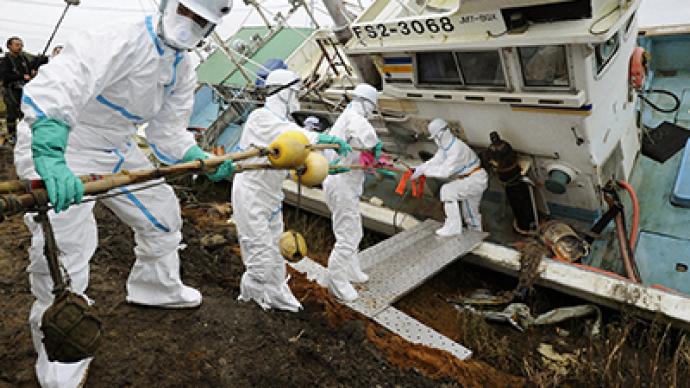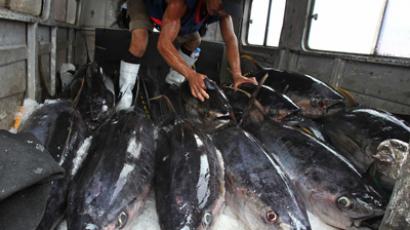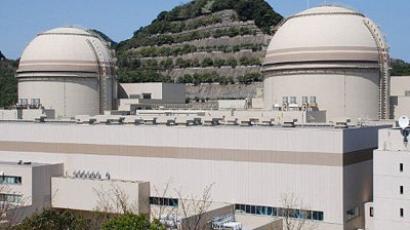Fukushima owner says plant may be leaking radiation into sea

TEPCO, operator of the Fukushima nuclear facility, failed to confirm that radiation leaks at the plant had fully stopped. This came after a US report that irradiated fish are still being caught off the coast of Japan following the 2011 meltdown.
The Tokyo Electric Power Co. (TEPCO) told journalists Friday they could not confirm that radiation had stopped leaking from the nuclear power plant struck by a massive earthquake and tsunami in March 2011. Still, they said that radiation levels in the seawater and seabed soil around the plant were declining.A recent article in the academic journal Science revealed that 40 percent of bottom-dwelling marine species in the area show cesium-134 and 137 levels that are still higher than normal.“The numbers aren't going down. Oceans usually cause the concentrations to decrease if the spigot is turned off,” Ken Buesseler, study author and senior scientist at the Woods Hole Oceanographic Institution told the Associated Press. “There has to be somewhere they're picking up the cesium.”“Option one is the seafloor is the source of the continued contamination. The other source could be the reactors themselves,” Buesseler added.Radioactive cesium is a human-made radioactive isotope produced through nuclear fission of the element cesium. It has a half-life of 30 years, making it extremely toxic.TEPCO confirmed that the radioactive water used to cool the plant’s reactors leaked into the ocean several times, most recently in April. The plant is struggling to find space to store the tens of thousands of tons of highly contaminated water used to cool the broken reactors and prevent it from a meltdown.The company managed to collect the water used to cool the spent fuel rods and circulate it back into reactor cores, so the reactors are now being cooled with recycled water. However, groundwater is still seeping through cracks in basement where the reactor and turbine are stored, posing further dangers.With the groundwater seeping in, the volume of decontaminated water collected and stored at the Fukushima Daiichi plant could triple within three years, TEPCO told the AP.The accident at the Fukushima-1 nuclear power plant was triggered by a 9.0-magnitude earthquake that struck northeastern Japan on March 11, 2011. An enormous tsunami crashed onto the land, resulting in the flash-flooding of four of the plant’s six reactors, shattering the cooling system. This led to a series of oxygen blasts, and a partial meltdown of the reactor core. The incident was the biggest nuclear disaster in 25 years since the tragedy at the Chernobyl nuclear power plant. Multiple cases of contamination of air and seawater by radioactive material have been reported. Over 140,000 people were forced to leave an evacuation area 40 kilometers in diameter around the plant. Most of those people are still living in shelters. Full management of the disaster, including dismantling the reactors, is expected to take around 40 years.














